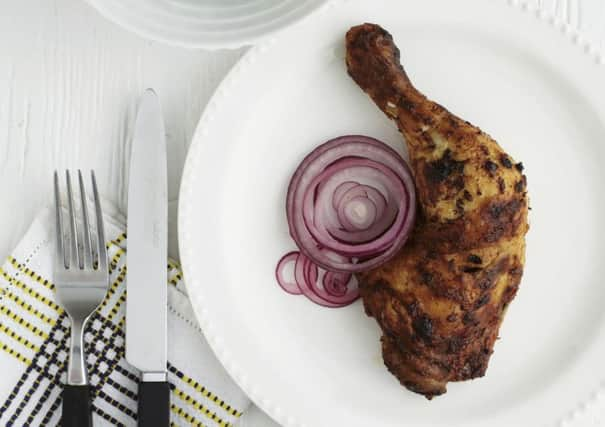Mediterranean, 5:2 or Paleo? We ask an expert about diets


MEDITERRANEAN
For those who like plant foods, olive oil, fish, fresh vegetables and fruit, the Mediterranean diet is a great option. So-called because of its popularity in Greece, Spain, France and Italy, this diet is said to offer a reduction of up to 30 per cent of the risk of heart disease or a stroke in those who follow it over a number of years.
The diet allows starchy carbohydrates such as rice or pasta and lean proteins derived from pulses and chicken. Sweeter, heavily-processed foods are discouraged to help maintain a low level of 25-35 per cent calorie intake from fat. Milk and dairy products are also permitted, as well as that most Mediterranean of habits in moderation - wine.
Advertisement
Hide AdAdvertisement
Hide AdA study found that the nitro fatty acids most likely produced from foods in the Mediterranean diet were the result of chemicals from olive oil and fish binding with vegetables. These acids would block the enzyme soluble epoxide hydrolase from taking effect, thus helping lower blood pressure.
Natasha Alonzi, of Arcobaleno Nutritional Therapy, echoes some of these themes: “Studies have shown that this diet shows a decreased risk of developing chronic disease such as cancers, cardiovascular disease and cognitive disorders such as Alzheimer’s.
“The original diet featured pasta and bread consumption, but over the years this diet has altered and the focus is on more vegetable and bean consumption. This is because white pasta and bread have a higher glycaemic load that may increase your risk of diseases such as diabetes.”
5:2
With its empahsis on calorie-counting, the 5:2 diet is a world away from the Mediterranean method. Using the concept of intermittent fasting, the 5:2 diet allows partipants to eat normally for five days a week before cutting their calorie consumption down to a quarter of their normal level for the other two days. This drastic method is more likely to yield quick weight loss results, but it is worth checking with your GP first to see if it’s suitable for you.
First made popular two years ago, the uptake of the 5:2 method has not yet yielded conclusive data - we still don’t know, for example, if it’s better to fast in series or spread the two days out over the week. While you can eat what you like during your non-fasting days, it can be hard to stay disciplined and refrain from eating too many fatty or sugary foods.
Natasha says: “In principle this diet might work for some but it might not work for all. People with blood sugar problems could struggle with consuming so little calories.
“Similarly, people that are high activity may need to consume more calories for fuel. There is however evidence to support [the claim that] calorific restriction may influence genes and increase longevity.”
PALEO
You may have already heard of the Paleo diet by its other name - the Caveman diet. So-called because the only food allowed is that which can be hunted or fished, the regime is based on the assumed eating habits of our pre-agricultural forebears. Eggs, nuts, spices, herbs, fruits and vegetables are staples.
Advertisement
Hide AdAdvertisement
Hide AdAs the Paleo method a low-carbohydrate and high protein diet, organic, grass-fed meat plays a bigger role in this diet than most, raising issues around both cost and cooking time involved. Cereal, grains and dairy are all off the menu as they’re all processed. While the health benefits of this method are open for debate, followers say that the Paleo diet can help cut the risk of heart disease.
Natasha’s views are clear. “Again there are positives in this diet, with high levels of plant foods – fruit vegetables, nuts and seeds,” she says. “However, it is heavily meat-based and for some that might not agree with them. There are no grains in this diet; whole grains can be a good source of fibre, needed for optimal digestion.”
So out of these three diets which are popular in Scotland, which is the best choice for the majority of people? Natasha has an unusual solution:
“The best diet out of the three would be the Mediterranean. However, you could take aspects from all three diets and incorporate.”
She recommends that health-conscious eaters aim for seven vegetables and two pieces of fruit per day, as well as good quality plant proteins such as chickpeas and lentils. Omega-3 levels can be boosted by eating oily fish and using olive oil in both cooking and salads.
In terms of alcohol consumption, red wine can be had in moderation but days without alcohol are needed too.
On the controversial 5:2 diet, Natasha adds: “You could also try calorie restriction by having the last meal of the day at 7pm and not eating breakfast till 7am, which is a less extreme but effective version of the 5:2.
“Everyone is an individual and one diet might not suit another - it is about compliance and finding a healthy way of eating for life and not just for a few weeks or months.”